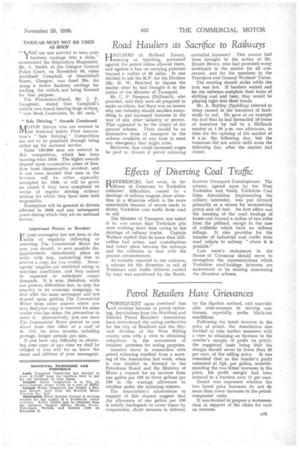Effects of Diverting Coal Traffic
Page 23

If you've noticed an error in this article please click here to report it so we can fix it.
REFERENCES, last week, in the House of Commons to Yorkshire collieries' difficulties, caused by a shortage of railway wagons, draw attention to a situation which is the more remarkable because of moves made to divert Yorkshire coal traffic from road to rail.
The Minister of Transport was asked if he was aware that Yorkshire pits were working short time owing to the shortage of railway trucks. Captain Wallace replied that he knew that difficulties had arisen, •and consultations had taken place between the railways and the collieries to deal with the present circumstances.
As recently reported in our columns, a scheme for the diversion to rail Of Yorkshire coal traffic hitherto carried by road was sanctioned by the North
Eastern Transport Commissioner. The scheme, agreed upon by the West Yorkshire and, South Yorkshire Coal Sales Association (representing the colliery interests), was put forward primarily as a means for economizing petrol and oil fuel. Its first effect was the banning of the road haulage of house coal beyond a radius of two miles from the pithead, except in the case of collieries which have no railway sidings. It also provides for the transfer of industrial coal traffic from road vehicle to railway "where it is possible."
Last week's statements in the House of Commons should serve to strengthen the representations which Yorkshire road-haulage interests are understood to be making concerning the diversion scheme.






























































